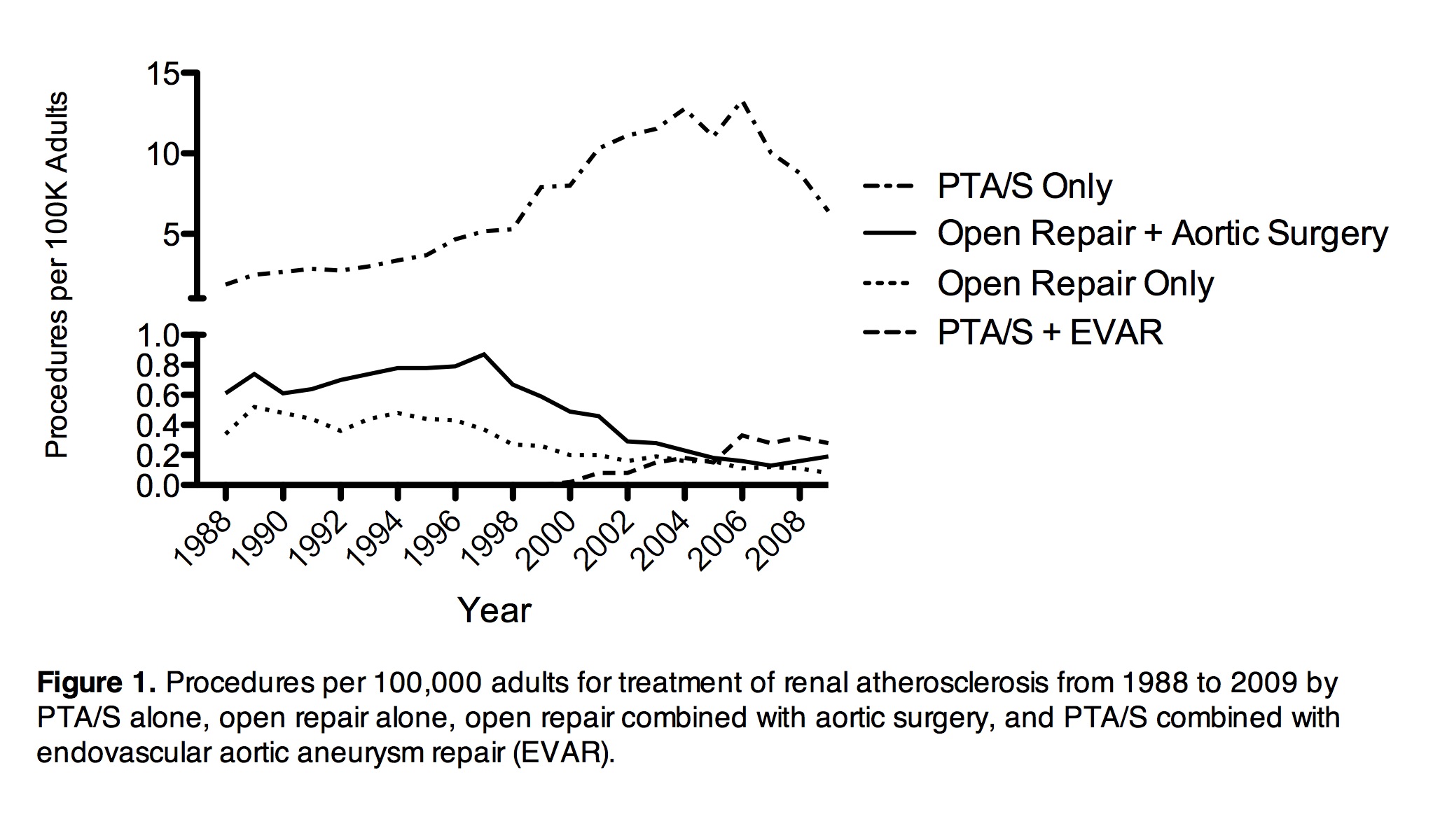|
Back to Annual Symposium Program
The Rise and Fall of Renal Artery Angioplasty and Stenting in the United States, 1988-2009
Patric Liang, Rob Hurks, MD, Rodney P. Bensley, MD, Frank Pomposelli, MD, Allen Hamdan, MD, Mark Wyers, MD, Elliot Chaikof, PhD, MD, Marc Schermerhorn, MD.
BIDMC, Boston, MA, USA.
Objectives:
Optimal management of renal artery stenosis (RAS) remains unclear. Prior studies have shown that renal artery interventions were increasing from 1988-2001. Several randomized controlled trails have failed to demonstrate a benefit with angioplasty (with and without stenting) (PTA/S). We hypothesize that interventions for RAS are decreasing.
Methods:
Patients undergoing open surgical repair (endarterectomy or bypass) or PTA/S in the Nationwide Inpatient Sample from 1988-2009 with a diagnoses of renal artery atherosclerosis (ATS) were identified. The trend in interventions, in-hospital death, and perioperative outcomes was analyzed over time.
Results:
We identified 308,549 PTA/S and 33,147 open surgical repairs. PTA/S increased substantially from 1998 until 2006 followed by a marked decrease after 2006. Open surgical repair steadily decreased over the study period. PTA/S procedures greatly outnumbered procedures done by open repair alone, combined open renal and aortic repair, and combined PTA/S and endovascular aortic aneurysm repair (EVAR) (Figure 1). PTA/S+EVAR surpassed both open repair with and without aortic surgery in 2006. PTA/S had lower in-hospital mortality (0.9% vs. 4.1%) and postoperative complications when compared to open repair: cardiac complications (0.8% vs. 5.5%), respiratory complications (0.3% vs. 6.2%), wound disruptions and infections (0.1% vs. 0.8% and 0.2% vs. 1.6%), respectively. PTA/S patients were more likely to be discharged home (86.2% vs. 76.3%) and had a shorter length of stay (4.4 days vs. 12.3 days). All results were significant at p<0.001.
Conclusions:
A significant decrease in the number of PTA/S procedures for the management of RAS occurred after 2006. This is likely due to a lack of demonstrated benefit with procedural intervention. However, PTA/S remains the dominant procedural option due to its lower rate of mortality and morbidity. 
Back to Annual Symposium Program

|


